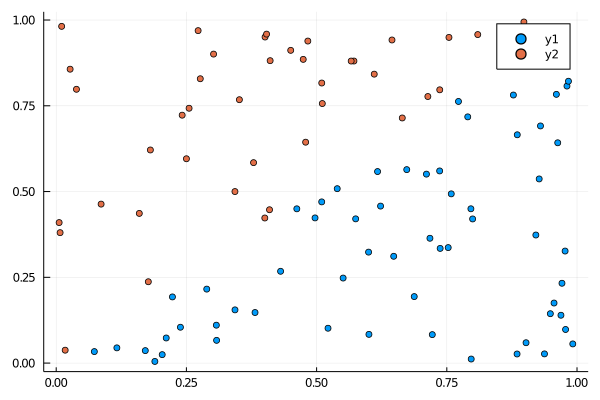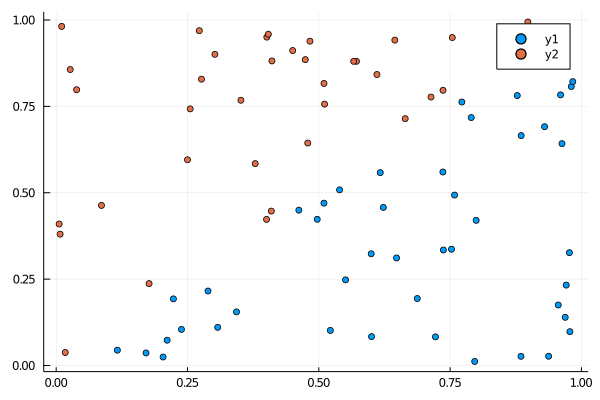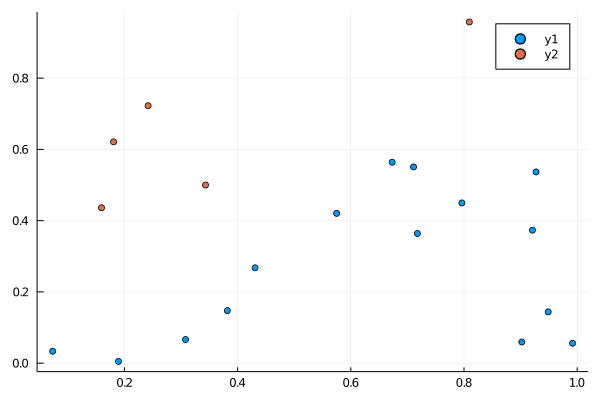i7242 | Xingyu Yan 一吃一大碗, 一睡一整天
Simple PLA
About PLA
This is only a simple/naive PLA that only on 2D for visualization, and didn't consider any noise or training/validation skills.
It follows the fundamental of PLA. Assume we have and . A line separates points into two categories.
Given , we know it classifies a point by:
Given its lable , if its classification is wrong, then:
Then we can update the / line by:
Implementation
The core part of PLA is simple as:
function pla_train(points, labels, iter = 500)
w = rand(3)
for i in 1:iter
for idx in 1:size(points)[2]
u = points[:, idx]'w
if u*labels[idx] < 0
w += points[:, idx]*labels[idx]
end
end
end
return w
end
function pla_predict(points, w)
labels = sign.(points'w)
endOther part of the code, including generation of train/test data set is here.
Test & Results
The points labeled by red/blue colours are ground truth labels. 
After training, the training data set is classified as: 
Use the testing data set, we got: 
There were no miss classifications by counting:
sum(result_test .!= labels_test)This was because the generated data is linear separatable, whithout noise. It's too simple 😹😹.